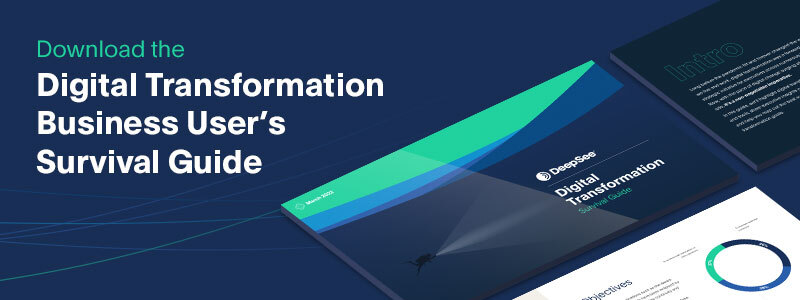Sources and Methods: Risk Managing SaaS for Regulated Applications
Article
By Aubrey Merchant-Dest
Risk management is a critical aspect of any business, but it is especially important in regulated industries such as healthcare, finance, and legal. In this blog post, we will explore how sources and methods can be used as a framework for risk management in SaaS applications for regulated industries.
Sources and Methods in Risk Management
Sources and methods refer to the information and techniques used to collect intelligence to assess and manage risk. In the context of SaaS applications for regulated industries, sources may include data from internal systems, third-party vendors, and regulatory bodies. Methods may include risk assessment frameworks, data analysis techniques, and compliance monitoring tools.
By using reliable sources and proven methods, businesses can effectively identify, assess, and mitigate risks associated with their SaaS applications. This is particularly important in regulated industries, where non-compliance can result in significant financial and reputational damage.
Critical Risk Management Aspects for Regulated Industries
In regulated industries, there are several risk management aspects that are particularly critical. These include:
- Compliance: Ensuring that the SaaS application complies with all relevant regulations and standards is essential. This may involve regular audits, compliance monitoring, and reporting.
- Data Security: Protecting sensitive data is a top priority in regulated industries. This may involve implementing robust security measures such as encryption, access controls, and regular security testing.
- Business Continuity: Ensuring that the SaaS application can continue to operate in the event of a disruption is essential. This may involve implementing disaster recovery and business continuity plans.
SaaS and Regulated Applications: A Complex Landscape
SaaS offers speed, scalability, and cost-effectiveness. Yet, regulated industries like healthcare, finance, and legal agencies handling sensitive data must carefully navigate these benefits against the potential risks:
- Vendor Scrutiny: The trustworthiness and security posture of SaaS vendors are inherently linked to your organization’s compliance.
- Loss of Direct Control: Traditional on-premises solutions provided full control over infrastructure and processes. SaaS necessitates adaptation to a shared responsibility model.
- Evolving Compliance: Keeping pace with constantly changing regulations (GDPR, HIPAA, CCPA, and industry-specific standards) in a SaaS environment adds complexity.
- Data Visibility: SaaS platforms can reduce visibility and control over how regulated data is stored, processed, and moved across systems.
“Sources and Methods” for SaaS Risk Management
The “sources and methods” approach help us create a structured risk management framework:
Sources:
- SaaS Vendors: Their infrastructure, development practices, and overall security posture.
- SaaS Configurations: Your own configuration choices within the platforms.
- End-Users: Their behavior and how they interact with SaaS systems.
- Integrations: Connections to other cloud services, on-premises systems, or third-party components.
- AI Models: (We’ll address this later!)
Methods:
- Vendor Security: The SaaS provider’s security controls and procedures.
- Data Governance: Your policies and practices for data classification, handling, and protection.
- Technical Safeguards: Encryption mechanisms, robust access controls, and activity logging.
- User Awareness: Training to educate users on regulation-specific requirements and secure usage of SaaS.
Key Practices for Mitigating Risk
Vendor Due Diligence:
- Assessments: Go beyond marketing claims. Request SOC 2 reports, third-party audits, and detailed responses addressing your industry’s regulations.
- Contracts: Ensure agreements outline responsibilities, data ownership, security baselines, and incident response plans. Don’t be afraid to negotiate for greater protection.
Purpose-Built Configuration:
- Least Privilege: Strictly enforce access controls based on the principle of least privilege, limiting data exposure.
- Data Classification: Implement a scheme to identify different levels of data sensitivity, aligning security measures accordingly.
- Encryption: Prioritize strong encryption for data in transit and at rest, potentially managing your own keys for greater autonomy.
Monitoring and Detection:
- Centralized Logging: Collect and analyze logs across SaaS platforms, AI models, and integrations for a complete picture.
- Anomaly Detection: Employ tools to flag unusual patterns that could signify breaches or data misuse.
Proactive Incident Response:
- Preparedness: Develop a plan involving the SaaS vendor and internal teams for swift response to breaches or outages.
- Testing: Conduct regular drills to refine your response process and update plans as needed.
Culture of Security:
- User Education: Conduct mandatory training on regulations, safe SaaS practices, and how to spot social engineering attempts.
- Accountability: Establish clear policies for data handling, breach reporting, and security best practices.
AI and Large Language Models
The use of AI and large language models is becoming increasingly common in SaaS applications. These technologies can be used to analyze large amounts of data, identify patterns and trends, and make predictions about future risks. This can help businesses to proactively manage risks and improve their overall risk management processes.
- Data Quality: AI models are only as good as the data they are trained on. Ensuring that the data used to train AI models is accurate, complete, and unbiased is essential for effective risk management.
- Model Interpretability: AI models can be complex and difficult to interpret, making it challenging to understand how they are making predictions and decisions. This can make it difficult to identify and address potential biases or errors in the model.
- Regulatory Compliance: The use of AI in risk management must comply with relevant regulations and standards. Ensuring that AI models are transparent, auditable, and explainable is essential for regulatory compliance.
- Human Oversight: AI models should not be used in isolation, but rather as part of a broader risk management framework that includes human oversight and decision-making. Ensuring that there are appropriate checks and balances in place to prevent AI models from making erroneous or biased decisions is essential.
In conclusion
Sources and methods are a critical part of risk management for SaaS applications in regulated industries. By using reliable sources and proven methods, businesses can effectively manage risks and ensure compliance with relevant regulations and standards. The use of AI and large language models can further enhance risk management processes, helping businesses to stay ahead of potential risks and improve their overall risk management capabilities.

